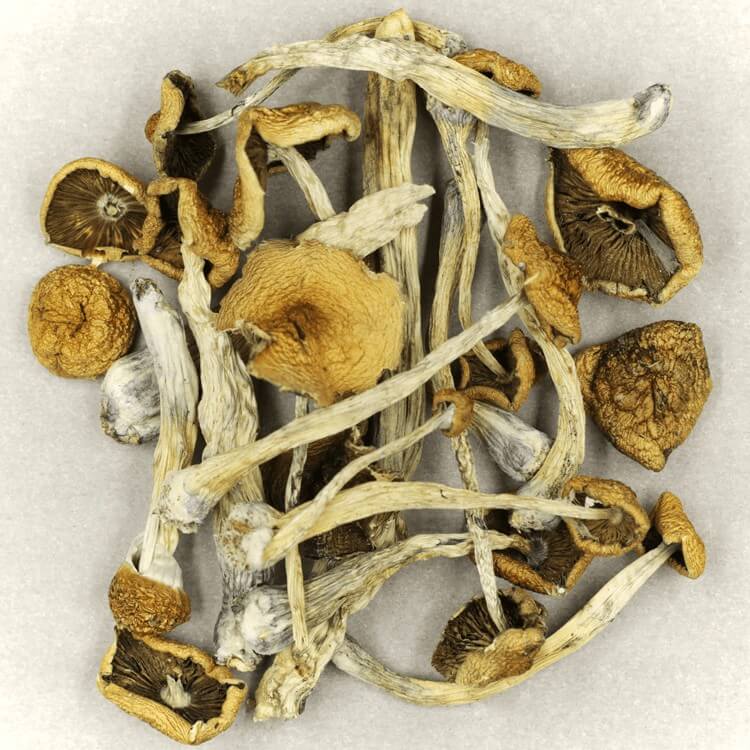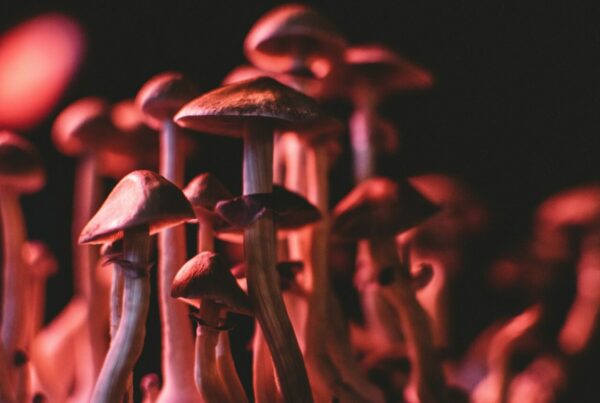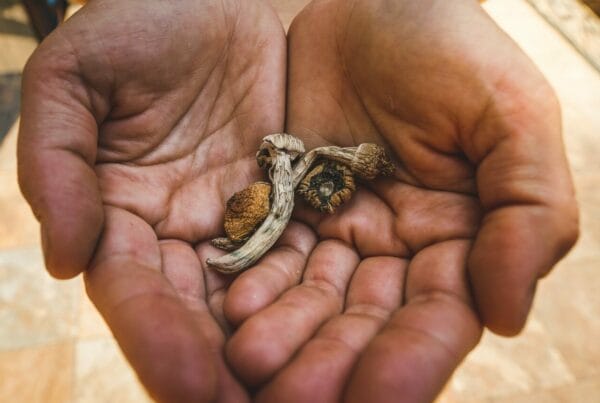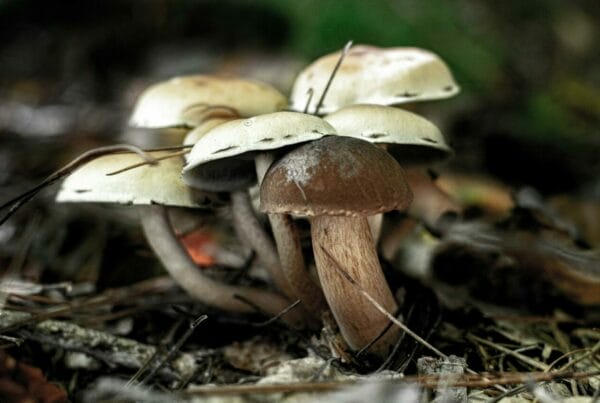Once regarded as mythical, the strength of Psilocybe mexicana is now being recognized due to ongoing research on psilocybin. The study of psychedelic substances is continually revealing potential therapeutic benefits, thereby shifting perceptions in the medical community. Experts view this evolving field as promising and are tirelessly working to establish safe dosage guidelines for medical applications.
Key Takeaways
- Advanced techniques like liquid chromatography in conjunction with tandem mass spectrometry are implemented by scientists to ascertain mushroom potency.
- Clinical trials are being conducted to explore the potential therapeutic benefits of Psilocybe Mexicana and other similar mushroom species.
- The genetic variation in magic mushrooms plays a crucial role in formulating an accurate dosage guide.
Psychedelic Mushrooms: Transition from Mystery to Medical Breakthroughs
Only a few health conditions were previously known to benefit from Psilocybe Cubensis. However, current research on psilocybin is shedding new light on its latent medicinal properties.
Researchers are exploring the potential of Psilocybe Mexicana and other potent strains for clinical trials and comprehensive research. Regardless of the subjects being in vivo or in vitro, this strain is efficacious in showcasing the most authentic effects and benefits of the fungus species.
Psychedelics Joining the Market
As continuous advancements and discoveries come to light, the public’s interest, especially those seeking therapeutic solutions, is piqued. Traditional mental health treatments often fall short, pushing people to look for more effective alternatives.
Enter the era of magic mushrooms.
Patients struggling with mental health problems are gravitating towards psilocybin, which exhibits potential in treating depression, alcoholism, anxiety, compulsions, tics, chronic pain, and more.
Currently, medical practitioners are pioneering innovative methods to precisely determine the ideal dosage for patient safety. Notably, a group of scientists from the University of Texas have developed a model to extract psilocybin and psilocin concentrations.
This makes it feasible to clinically ascertain the potency of magic mushrooms.
The Distinct Properties of Mexicana
Golden Teachers, Blue Meanies, and B-Plus are among the most studied magic mushroom species. However, for a comprehensive understanding of the safe use of these fungi, it’s crucial for researchers to investigate other species as well.
The Mexicana species has gained considerable attention in scientific circles, mainly due to its historical significance as one of the oldest species. Moreover, its relatively low potency makes it a promising candidate for meeting medical drug standards.
Although the Mexicana strain is less potent compared to others, it can still generate effects similar to those of mainstream strains, making it a preferred choice for microdosing among patients.
Like its peers, this strain contains consistent levels of psilocybin and psilocin. So, what makes it stand out? The answer lies in its historical and anthropological significance.
Uncovering a Deep-rooted “Mexican” History
In the past, Psilocybe mexicana naturally flourished in moss. These psilocybin mushrooms were held in high esteem by ancient civilizations for various purposes, often associated with mystical or supernatural phenomena.
Delving deeper into the history of Mexican mushrooms, their initial recorded use dates back over 2000 years by the indigenous people of North and Central America. The Aztecs, a historical ethnic group, worshipped these mushrooms as the “food of the Gods,” or “teonanácatl” in their native tongue.
If the Aztecs were present today, they would likely attest to the transformative, emotionally profound, and psychologically grounding effects of the Mexicana, even without understanding these modern terminologies.
Despite the evolution of cultivation methods, this mushroom has retained its natural psilocybin concentrations, thereby preserving its authenticity—a characteristic highly prized by researchers and institutions dedicated to psychedelic research.
New Developments in Psilocybin Content and Potency Evaluation
A team of ten scientists from the University of Texas at Arlington and several other research institutions have pioneered a novel method for assessing the potency of psychoactive compounds in mushrooms. This innovative approach marries liquid chromatography and tandem mass spectrometry.
Below are two cutting-edge techniques:
- Liquid chromatography is a procedure used to separate and analyze the components of chemical mixtures. It’s utilized in this context to identify the active chemicals in mushrooms. In this process, a liquid sample is run through a column packed with a solid (known as the stationary phase). The various chemicals within the sample interact differently with the stationary phase and the mobile phase, causing them to separate at different rates while moving through the column.
- Spectrometry is a technique that investigates the interaction between matter and electromagnetic radiation at varying wavelengths. It allows for the identification and quantification of substances based on the unique wavelengths of light that molecules absorb and scatter. This technique facilitates the determination of the electronic, vibrational, and rotational states of a given chemical.
Five magic mushroom strains were subjected to this technique. The scientists found that the average total psilocybin and psilocin levels in these strains were between 0.879 and 1.36. These concentrations exceeded those found in other varieties, including Bull Run and Cambodian. The accuracy of their study was validated by comparing their findings with results from other independent laboratories.
The consistency of results between the two labs further strengthened the credibility of their testing methodology in accurately determining the potency of the mushrooms.
If these findings are validated by experts, this could contribute new techniques to the current methods of testing psychedelic potency, acting as an additional safety precaution to prevent inaccurate dosage determinations.
Extending Research to Additional Species
Widening the scope of research to include other species is advantageous. It can deepen our knowledge of the health benefits associated with different strains and offer preliminary data on the effects of less potent mushrooms.
In addition, it could facilitate education about the impact of various dosages on the psychedelic experience. By contrasting the effects of Mexicans with those of more potent strains such as Psilocybe Cubensis, researchers could ascertain how differing levels of active compounds can affect therapeutic outcomes.
For instance, the Blue Meanies strain is known to produce more potent hallucinogenic effects, which could potentially be beneficial in treating conditions like depression. Conversely, lower potency strains are more suitable for microdosing or for milder uses such as mood enhancement or focus improvement.
Genetic Diversity Can Lead to Safer Therapies
It’s not widely acknowledged that different cultivars or varieties have unique genetic profiles and
Not all hallucinogenic mushrooms are the same; they vary in potency, chemical composition, and effects. This diversity allows healthcare professionals to select the most suitable type for specific medical applications and adjust doses to meet individual needs, thereby reducing risks and maximizing benefits.
For instance, Psilocybe Semilanceata, also known as Liberty Caps, or Psilocybe cyanescens, have distinct alkaloid profiles that could be effective in managing anxiety. On the other hand, certain synthetically grown mushrooms may be better suited for addressing substance addiction or compulsive behaviors. This range enhances the potential for creating tailored treatments that optimize safety and efficacy.
It can be inferred that the genetic diversity in hallucinogenic mushrooms, when combined with innovative methods for potency evaluation and identification, is key for devising safer medical therapies.
Enhancing Safety in Medical Applications
Let’s contemplate the potential benefits of safer dosage practices.
- Minimized risk of overdose: Accurate dosing alleviates concerns about overdosing. This also indicates that product labels should be made clearer to avoid customer misunderstanding.
- Increased predictability: Users can better predict the effects or experiences they may encounter during their journeys with more precise dosing. This can reduce intense sensations and anxiety, ultimately improving patient satisfaction.
- Uniform measurement: In some way, dosing accuracy encourages a standard metric that allows people to easily refer to charts for potential effects.
Experience the Advantages of Accurately-dosed Shrooms Through Advanced Potency Tests | Order Magic Mushrooms Online at Magic Mushrooms Calgary Canada
If these two groundbreaking methods continue, you won’t have to deal with unexpected effects anymore. Pair this with smart online shopping at Magic Mushrooms Calgary Canada, where we offer dried mushrooms that provide a serene, relaxing psychedelic journey without excessive psychoactivity. Buy psychedelics online in Canada via Magic Mushrooms Calgary Canada.
Frequently Asked Questions
Is Psilocybe Mexicana the same as the Big Mexican?
Are Big Mexicans and Psilocybe Cubensis identical?
No, Big Mexicans and Psilocybe Cubensis are distinct strains of mushrooms, so it’s critical not to confuse them. Big Mexicans have a higher compound isolation, ranging from 0.5% to 1%, making them significantly more potent.
Psilocybe Zapotecorum and Psilocybe Cubensis differ in appearance. Typically, Psilocybe Zapotecorum has a bell-shaped cap, while Psilocybe Cubensis tends to have a conical cap.
What’s the highest concentration of psilocybin and psilocin in Mexican mushrooms?
Mexican mushrooms can have a psilocybin and psilocin concentration of up to 0.25%. This concentration level is comparable to that of the Golden Teacher strain and, despite being relatively low, it can still initiate profound psychedelic experiences that may offer health benefits.
What is the medically recommended dosage?
The usual prescribed dosage ranges from 1 to 2 grams. This can fluctuate due to factors such as the method of consumption, the individual’s metabolism, and the specific strength of the mushroom strain. Some individuals opt for sub-threshold dosages between 0.05 (50mg) to 0.025 grams (250mg) in an attempt to minimize the hallucinogenic effects.





